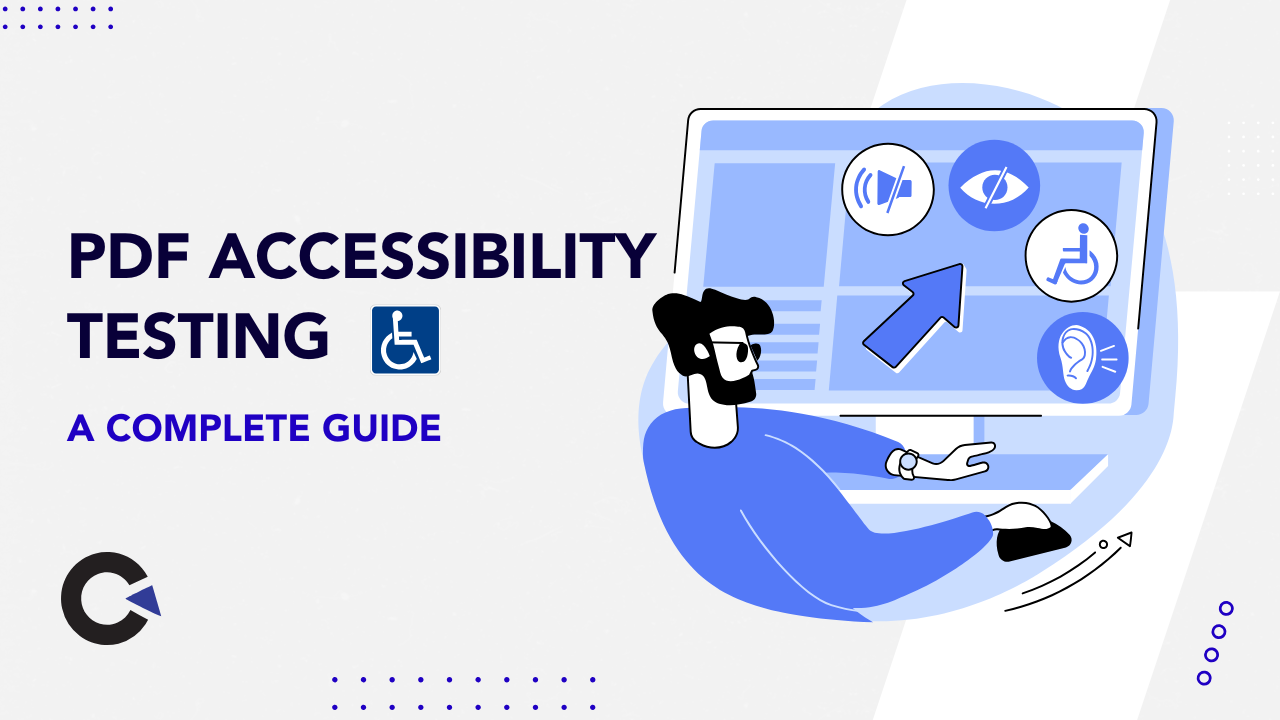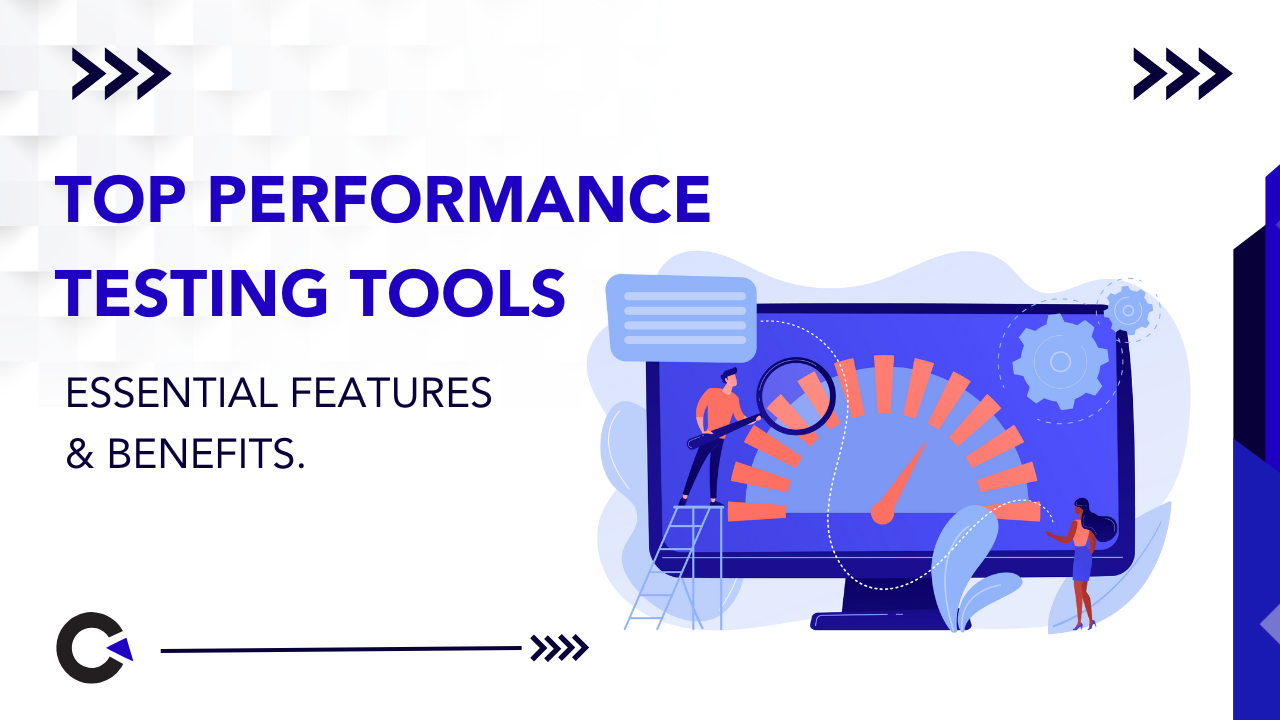
by admin | Apr 22, 2019 | Software Testing, Fixed, Blog |
The use of Machine Learning (ML) is one of the latest trends being leveraged by software testing companies to predict test coverage, a crucial test management metric. With ML, companies can ensure that test management goes beyond spreadsheets, incorporating the latest Artificial Intelligence (AI) technologies.
ML lends enhanced precision to test coverage predictions, thereby paving the way for a better assessment of quality delivery of software projects. Test coverage predictions for a release can attain higher levels of accuracy with ML as compared to manual testing. There are several reasons for why ML benefits Test Coverage predictions, and any top QA outsourcing company would be able to work with Machine Learning to provide the best software products.
With over one-third of software testing being a repetitive process, aimed at checking results, the use of ML and AI bots enables greater focus on the qualitative aspect of testing. Since test coverage largely pertains to the quantitative extent of tests, Machine Learning facilitates better software testing coverage predictions as it pivots around creative and business-centered test inputs and validations.
The shift to Agile and DevOps has added a new dimension to software development and testing. The breakneck speed of software development in present times has brought test coverage and quality assurance to the forefront. Test coverage defines specific parts of software that tests need to cover. Using ML can ensure that test coverage is expanded to an ideal amount – based on the priorities of a business and its risk analysis, to ensure that coverage predictions have elevated levels of accuracy.
The demand and popularity of ML has soared in recent years since it characterizes a software category that allows a computer system to learn without explicit programming. ML software has the ability to ‘learn’ from a given set of data and use its learning to make predictions about a new data set.
ML and other automated testing techniques can enable a software testing company to increase the overall scope and depth of tests. Automated tests can better ascertain that the software being tested behaves as expected because hundreds of different test cases can be executed in each test run. The greater test scope afforded by Machine Learning can result in more comprehensive test coverage.
Software testing companies can improve test coverage significantly by using ML and automation with tools such as Cross-Browser Testing. The improved test coverage results from the automation of critical flows and quick access to the browsers, devices or platforms that testing has to cover. With the testing plan covering diverse scenarios, Machine Learning can facilitate effective test coverage predictions.
Manually combining the predictions made with the help of reports from test management tools is a time-consuming process. It fails to accurately predict tasks such as test coverage, test estimation, and quality issues. However, with machine learning algorithms, it is easy to establish cross co-relations from all the data collected. ML, therefore, is an efficient technology for predicting test coverage and monitoring the progress of the delivery timeline of a project / projects.
New methodologies in software testing and the adoption of the ML approach have resulted in more reliable testing outcomes than the traditional testing methods. In addition to increasing test coverage, the new automated testing techniques and detailed attention to data management have resolved the issue of ignored bugs in software, and reduced the time required by testers to conduct tests on software.
The Machine Learning approach ensures a competitive positioning for the testing company using the technique given the ability to forecast customer requirements. A broader test coverage mechanism empowers a company to analyze customer data, understand the in-demand features/products and make software modifications accordingly. ML can therefore, lead to higher revenues and more cost-effective QA processes for a company.
Software testing companies using ML and AI technologies for automated testing can produce a comparatively higher quality of software than those dependent on manual testing. These technologies enable improved test coverage, accurate coverage predictions, and better test quality. Additionally, companies that incorporate ML also bring down the requirement of manual labor for testing purposes.
Using Machine Learning for test coverage predictions can prove to be a decisive step by QA companies looking to accelerate their continuous test automation efforts to produce quality software. Several companies are adopting the ML technology for extending test coverage at scale and forecasting building performance. The inclusion of ML in testing can mainly be beneficial for a company because it improves test coverage, simplifies prediction models and reduces computation times drastically. Connect with us as the experts in this realm and more.

by admin | Apr 30, 2019 | Selenium Testing, Fixed, Blog |
Sometimes, logs from Chrome are useful to understand application’s issues. However, when the Selenium is being executed, we can’t capture and verify Chrome logs.
In Selenium 4, you can listen Chrome Console logs using “Devtools” interface. In this blog, you will learn how to listen Chrome console logs using Selenium 4.0 (Alpha).
Selenium 4.0 (Alpha) Maven Dependency
<dependency>
<groupId>org.seleniumhq.selenium</groupId>
<artifactId>selenium-java</artifactId>
<version>4.0.0-alpha-1</version>
</dependency>
Sample Code
DevTools devTools = ((ChromeDriver)driver).getDevTools();
devTools.createSession();
devTools.send(Log.enable());
devTools.addListener(Log.entryAdded(), entry -> System.out.println(entry.asSeleniumLogEntry()));
Using the above code, Chrome DevTools Console logs can be published in Log4j or LogBack files.
Full Code
import org.openqa.selenium.WebDriver;
import org.openqa.selenium.chrome.ChromeDriver;
import org.openqa.selenium.devtools.DevTools;
import org.openqa.selenium.devtools.Log;
import org.slf4j.*;
public class Selenium4Devtools {
final static Logger logger = LoggerFactory.getLogger(Selenium4Devtools.class);
public static void main(String args[]){
System.setProperty("webdriver.chrome.driver", "drivers/chromedriver.exe");
WebDriver driver = new ChromeDriver();
try{
DevTools devTools = ((ChromeDriver)driver).getDevTools();
devTools.createSession();
devTools.send(Log.enable());
devTools.addListener(Log.entryAdded(), entry -> logger.error(entry.asSeleniumLogEntry().getMessage()));
driver.get("http://www.codoid.com");
}
catch(Exception e){
e.printStackTrace();
}
finally {
driver.quit();
}
}
}

by admin | May 8, 2019 | Performance Testing, Fixed, Blog |
Load testing is a crucial subset of Performance Testing that is gaining immense significance in the present-day technology scenario. Performance testing gauges the ability of a web application to handle large volumes and patterns of traffic effectively, before it goes live.
Load testing of web applications and the APIs is a testing practice that essentially tests the performance of the system under peak traffic conditions. To perform load testing, testers create a model of expected usage of an application by simulating concurrent access of the application by multiple users. Some of the reasons why load testing is important have been listed below:
Measuring the Performance and Quality of Service of a WebsiteLoad testing allows a performance testing company to measure the quality of service (QOS) performance of an organization’s website based on actual user behavior. As part of this type of testing, testers evaluate the performance of the website ‘under load,’ using different frameworks and tools like Apache JMeter, BlazeMeter, Blitz, CloudTest, LoadRunner, Loader.io, and several others. The hardware and software statistics monitored by testers include the CPU, memory, response time of the physical servers, and throughput of the system under test (SUT).
Analyzing the OSI Protocol StackLoad testing tools are capable of analyzing the entire OSI protocol stack rather than focusing on only the GUI performance, as is the case in regression testing. A load testing tool sends out hypertexts transmitted by the web browser upon the click of the button by a user. When multiple-user environments are involved, load testing tools can send out hypertext for all users, each having a distinctive login ID and password.
Identifying Significant Parameters of Application PerformanceWith the help of load testing, the key parameters of an application can be effectively identified. These parameters comprise the response time per transaction of an application, performance under various load conditions of system/database components, design issues affecting the software, and network delays between the client request and server response.
In addition, problems with software configuration such as web server, application server, and database server – are also identified, along with the shortcomings rooted in hardware, such as CPU maximization, memory limitation, and network bottleneck.
Ascertaining the Maximum Operating Capacity of an ApplicationWith the help of load testing, an organization can efficiently ascertain the maximum operating capacity of its application. Since load testing examines how the system behaves under normal load conditions as well as anticipated peak load conditions, testers can spot the elements that cause degradation or hold-ups. Hence, load testing is also called reliability testing, concurrency testing, or volume testing, as it helps testers to check the capability of the existing infrastructure to run the application under test.
Gaining Insight into the Causes for Slow System PerformanceLoad testing can pave the way for top-notch performance testing services. The process mainly pivots around the evaluation of system performance, in order to ensure that there is no system downtime when numerous users access an application simultaneously. Testers can use load testing tools to learn about the reasons behind the slow system performance. These reasons may include application server or software, database server, network latency, network congestion, client-side processing, and load balancing between multiple servers.
Improving the Scalability of an ApplicationLoad testing allows testers to determine the highest possible user numbers that an application can support. This information can be very useful for testers when additional infrastructure is required to meet potential demand for scaling the application in the future. Besides application scalability, testers can also perform special load testing, over and above the regular load testing, during certain events such as Cyber Monday, Black Friday, music festivals or sporting events, and the likes – when there is an enormous spike in traffic due to flash sales or mass crowd interest.
Reducing Cost Implications of an Application’s FailureLoad testing is an important testing technique that can be used by testers for detecting issues in an application before they crop up. The early detection of issues and the subsequent prevention of defects can bring about a significant reduction in the cost implications of the failure of an application. In the absence of load testing, failures during production can lead to massive costs for an organization due to unavailability of the application in high-traffic conditions.
Load testing is a highly productive software testing mechanism that can enable an organization to understand the potential capacity limits of its application or website. Load testing ensures that the software performs to render high user satisfaction, making load testing a significant part of the web design and optimization process. Successful load testing lends the assurance of a high-quality application that can serve a large number of users of the organization. Connect with us to ensure the best quality of applications / software.

by admin | Mar 12, 2019 | E-Learning Testing, Fixed, Blog |
UAT or User Acceptance Testing is also referred to as end-user testing, application testing or beta testing. It is a stage of eLearning development, where the course is verified in real time. In an eLearning project, UAT is mostly in the last phase. It is conducted before the go-live decision is taken. Through eLearning testing, the stakeholder gets the opportunity to verify the course and gain confidence that they have delivered the course that caters to the requirement.
It permits the stakeholder to verify the following points:
- Is the eLearning product simple to navigate?
- Do the navigations, features, and functions of the eLearning course function as designed?
- Does the response in the assessments add value and reinforce the content to my understanding and learning?
- Do video and audio sequences add value and enhance the content as per my understanding and learning?
PlanningPlanning is the most important element in User Acceptance testing process. The planning process helps to outline the User Acceptance testing strategy, explain the main focus areas, entrance, and exit criteria.
Designing Test cases
The test cases are developed to include the entire functional situations of eLearning course in real time usage. The UAT test cases should be developed using simple language. Additionally, it the entire test process should be made easy to understand for the tester.
Finding a team The testing team that performs UAT Test Cases plays an important role in the UAT process. The test execution team consists of real or actual world users signing up for the eLearning courses. An important way of appreciating the testing team is to identify them in several forums.
Test Execution Further, the testing team would perform the developed test cases and would additionally achieve certain relevant random exams.
Recording the Defects The testing team would record and report defects identified during the UAT. These bugs or defects will be drafted as a document with necessary comments, making it easy to further evaluate and eliminate the defects.
Resolving the Bugs The next step is to resolve or fix the bugs identified by the testing team in the eLearning program. The eLearning development members make final alterations to the course to produce a bug free eLearning course.
After resolving the bugs and issues, the QA team would provide approval of the eLearning – this simply means that the course is now ready to be deployed as per the user requirements.
UAT plays an important part in eLearning. It helps in demonstrating that the particular course is functioning in a way to meet the requirements of the learner. The stakeholder can remain confident and sure about their expectations of the course with UAT. There is no guesswork. The major feature of UAT is it will not cause major revelations when the course is handed over to the user.

by admin | Mar 17, 2019 | Desktop App Automation Testing, Fixed, Blog |
Desktop applications require a human to run them and work separately as full-function programs and independently of all other applications. Adequate and proper hardware and a set of functions are required for accurate desktop application testing. This testing is complex and intricate since most are developed for a particular environment, and hence interaction with other factors is nil. In addition, a number of computer systems with varying configurations are required for this type of testing, but the tester has the ability to completely control the application under test.
Specific environments act as the model or starting point of a test plan. It is possible to test an application under classifications such as load, functionality, GUI, and more, and since desktop applications are normally in use by a single user at a given point, it must be installed as an exe file.
There is of course a significant rise in mobile and handheld device technology, but desktops are still used, and hence businesses must ensure that the applications for such systems are ready to function when installed. It is necessary that desktop applications are not ignored and made part of QA programs and any top quality QA Outsourcing company will understand the importance of such applications and will ensure that your business has the best.
Just as with any applications and systems, desktop applications need deft management since if poorly running and defective, they can negatively impact business, increase costs, and lead to a severe dent in the reputation of a company.
Running desktop applications is about testing applications on personal computers, desktop computers, and other such devices, and testing is run to check functionality, security, usability, stability, and more. If companies have the resources both money and human, to invest in this type of testing it would make sense to have an in-house team. However, since such testing has stringent deadlines and requires a high level of quality control, most businesses may find themselves incompetent to deal with it. It would make more business sense to outsource this function to a top quality QA testing company, capable of delivering more for every resource invested. Such a company would not only help to bring down costs and overheads of managing such tests, but would also ensure that the software remains efficient and speedy across all the stages.
The kind of errors in desktop application is different to other applications, which is why they require professionals to manage them.
- 1. Inaccurate and unauthorized features auto installed by the application, without input from the user
- 2. Wrong shortcut icon
- 3. Issues related to dependence on platform
- 4. Background running of a process even post uninstallation of application
- 5. Incorrect warning / error messages
- 6. Unauthorized access to users to even restricted applications
Anyone excelling in the realm of testing would know that a checklist is quintessential when writing test cases, and in the case of desktop applications too such a checklist would help to create a high number of test cases. The testing checklist should include the following tests:
- 1. Testing GUI or Graphical User Interface
- 2. Functional Testing
- 3. Performance testing under normal and load conditions
- 4. Compatibility Testing
There are several tools that are part of industry practice to assist with desktop application testing. A highly seasoned software testing company would have the latest tools, technology, and methodologies for this purpose. The tools include a variety of regression testing and stress testing tools. Such a company would also understand that since there are some key differences between web applications and desktop applications, their handling and testing would also be different and must be managed as so.
The ownership, responsibility and accountability of a desktop application tester are very different to that of a web or client server applications tester. Understanding these differences proves critical to ensure that product quality is of the highest order and a highly expert team of desktop application testers would always remain on point. Connect with us to access the best in class team of experts.

by admin | Feb 18, 2019 | Mobile App Testing, Fixed, Blog |
Every automation tester should be familiar with Appium commands to create a robust mobile apps automated test scripts. However, knowing all the methods/commands is a challenge. A quick reference material/cheat sheet will be helpful for mobile app automation testers.
In this blog article, we will see most important Appium commands.
DesiredCapabalities for launching an application (Android):
//Setting desiredcapabilities for particular device and application
DesiredCapabilities caps = new DesiredCapabilities();
caps.setCapability("deviceName", "Lenovo");
caps.setCapability("version", "6.0");
caps.setCapability("platformName", "Android");
caps.setCapability("appActivity", "com.android.vending.AssetBrowserActivity");
caps.setCapability("appPackage", "com.android.vending");
caps.setCapability("appWaitActivity", "2000");
caps.setCapability("noReset", "true");
caps.setCapability("autoGrantPermissions", "true");
caps.setCapability("automationName" ,"UiAutomator2");
caps.setCapability("appWaitActivity", "SplashActivity, SplashActivity,OtherActivity, *, *.SplashActivity");
caps.setCapability(MobileCapabilityType.NEW_COMMAND_TIMEOUT,"6000");
caps.setCapability("unicodeKeyboard", "true");
//Launching the application using appium server
AndroidDriver<AndroidElement> driver = new AndroidDriver(new URL("http://127.0.0.1:4723/wd/hub"), caps);
//Finding element using accessibilityId
driver.findElementByAccessibilityId("Play Store");
//Performing key press action
driver.pressKeyCode(AndroidKeyCode.HOME);
Or
//Locking the device
driver.lockDevice();
//Verify the device is locked
driver.isLocked();
//Unlock the device
driver.unLockDevice();
//To display the device keyboard
driver.getKeyboard();
//To hide the device keyboard
driver.hideKeyboard();
//To verify the keyboard is displayed
driver.isKeyboardShown();
//To open the notification
driver.openNotification();
//Get the device current time
driver.getDeviceTime();
//get current location of the device
driver.Location();
//setting the device location
Location location = new Location(77.59974003, 12.91024781, 909);
driver.setLocation(location);
//get the orientation of the device
driver.getOrientation();
//change the orientation of the device to Landscape
driver.rotate(ScreenOrientation.LANDSCAPE);
//change the orientation of the device to Potrait
driver.rotate(ScreenOrientation.POTRAIT);
//activate a new application in real device
driver.activateApp(“app package or bundle id”);
//install a new application in a real device
driver.installApp(“Location of the apk”);
//verify the application is installed
driver.isAppInstalled(“app package or bundle id”);
//Tap on an element in the application
TouchActions action = new TouchActions(driver);
action.singleTap(Element element);
action.perform();
//Double tap on an element in the application
TouchActions action = new TouchActions(driver);
action.doubleTap(Element element);
action.perform();
//Long press on a selected element
driver.longPress(WebElement element);
//Scroll the displayed screen
TouchActions action=new TouchActions(driver);
action.scroll(xOffset, yOffset).perform();
// close the current application
driver.terminateApp();
// remove an App from the device
driver.removeApp();
//reset the App for current session
driver.resetApp();
//To retrieve the full capabilities associated with the driver
driver.getCapabilities();
//Use this call to retrieve a SessionID
driver.getSessionId
//Retrieve the current settings of the device
Map<String, Object> settings = driver.getSettings();



























